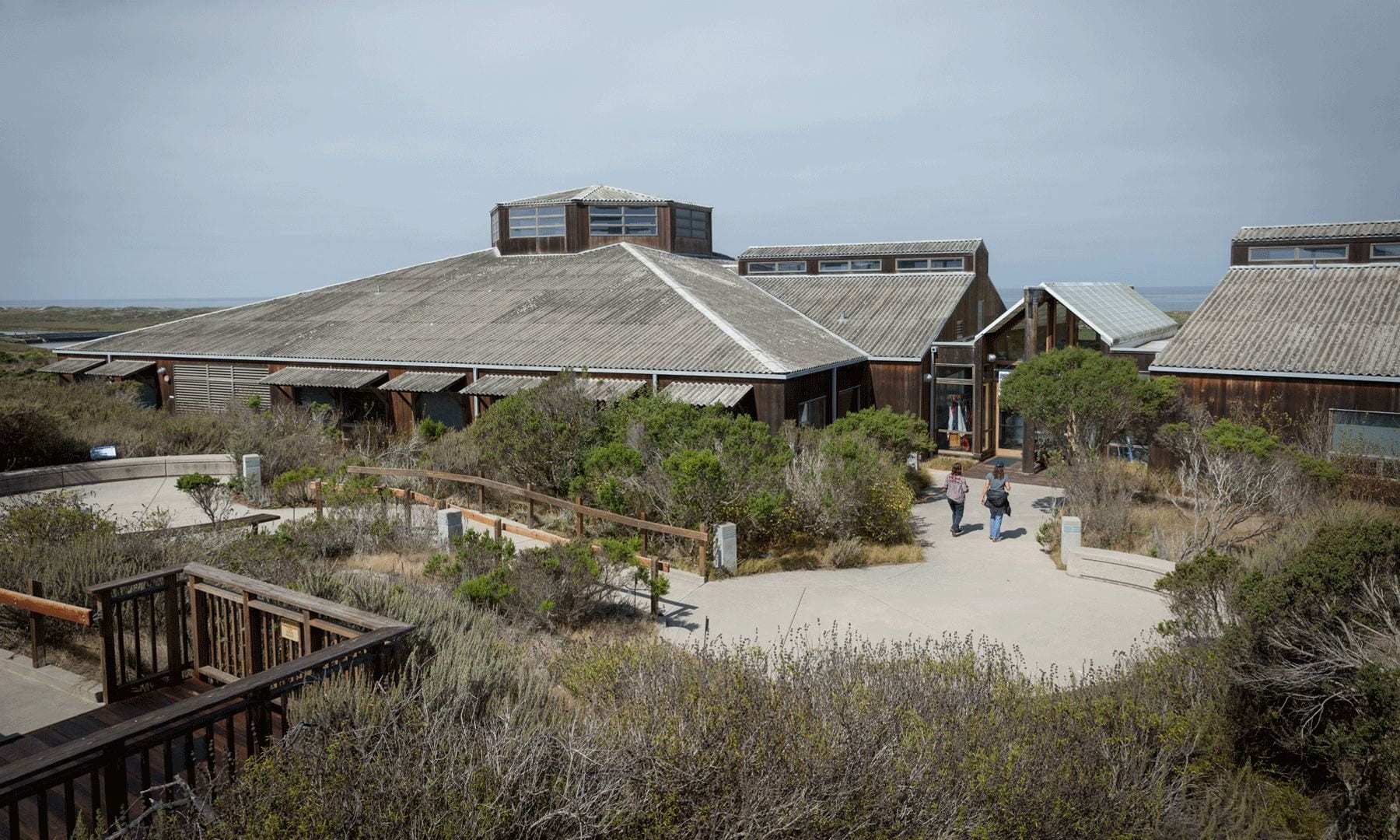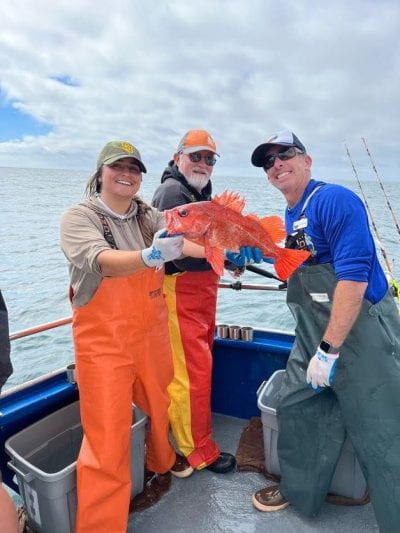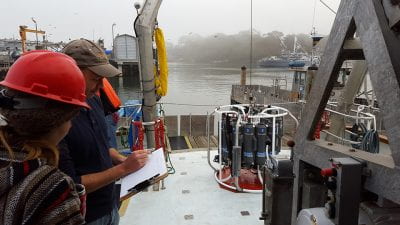New SJSU MLML Research Studies Monitor Changing Oceans and Climate Impacts

At San José State University’s Moss Landing Marine Laboratories (MLML), biologists and researchers are closely monitoring marine systems in a changing world. Photo by David Schmitz.
The planet depends on our oceans for oxygen, climate regulation, food and overall ecological balance. Monitoring the oceans provides valuable data and insights that help us understand, respond to and mitigate the impacts of climate change. At San José State University’s Moss Landing Marine Laboratories (MLML), biologists and researchers are closely monitoring marine systems in a changing world, and three new grants are furthering this work.
Studying How Light Moves at the Margins of Sea and Sky
Laser surgery. Digital data. Satellites. 3D printing. Medical imaging. Solar panels. All of these utilize optical propagation — the process of light moving through different media — which is foundational to much of tech and science today.
Qing Wang is an expert in the study of how light and radio-waves are bent and distorted. As an adjunct faculty member at MLML and professor in the Meteorology Department at the Naval Postgraduate School (PS) in Monterey, she’s leading research around optical propagation, studying the ways light bends, reflects or changes speed as it moves through different substances, like the interface of air and sea. A wide range of technologies and scientific endeavors rely on this information. Activities such as underwater exploration, oceanography, naval operations, offshore drilling, and underwater robotics rely on optical communication to send data, images and videos in real time between underwater devices and surface stations.
Wang’s new study, titled “Airborne Instruments to Quantify Optical Turbulence, Aerosol, and Surface Wave Impact on Optical Propagation in the Marine Atmospheric Boundary Layers” involves faculty and students from MLML and PS. An $854,723 grant from The Office of Naval Research will equip research teams with new aircraft-borne equipment to conduct research on the transmission and reception of electromagnetic waves through the air-sea atmosphere.
Wang’s research is carried out by a Twin Otter research aircraft, operated by the Center for Interdisciplinary Remotely Piloted Aircraft Studies (CIRPAS) at the PS. The grant will equip the plane with new equipment to capture additional data. New instruments include:
- A surface scanning wave Lidar
- A Medium-Wave Infrared (MWIR) camera for tracking the aircraft on a gimbal-stabilized positioner
- A Droplet-size spectrometer to make aerosol measurements down to 10-m above the surface.
Protecting Delicate Coastal Habitats in the Face of Climate Change
Scott Hamilton’s research on coastal marine fish and their habitats now ties into a rich network of 20+ protected marine habitats along California’s coast. An associate professor of ichthyology at MLML, Hamilton’s studies inform the recovery of California’s coastal fisheries — a complex and ongoing challenge in the face of climate change and human-induced pressures.

Photo by Scott Hamilton.
California’s coastal waters are known to be some of the richest in the world, but close to 90% of the fish that existed in the 1950s have disappeared and three-quarters of California’s kelp forest have all but vanished since the 1960s.
In response to these crises, a chain of Marine Protected Areas (MPAs) were designated in 1999 along California’s coast where human activities that disturb habitats, like fishing, are restricted. Every ten years, the MPAs are assessed with the help of the California Collaborative Fisheries Research Program (CCFRP) under the the California Department of Fish and Wildlife. A $1,949,999 grant over the next three years from the California Ocean Protection Council will enable lead investigator Hamilton and a network of partners to evaluate and bolster this long-term marine protection effort. Matching funds of $1.65 million from a joint appropriation to CSU COAST and CCFRP, from the 2022-2023 governor’s budget, will bolster the huge initiative.
Managing multiple marine protected areas is a complex, long-term undertaking, and requires many moving parts. Started in Central California in 2007, the CCFRP project grew to include statewide coastal areas in 2017. Today, the project engages recreational fishermen and the sportfishing industry, charter companies, captains, resource managers, non-governmental organizations (NGOs), scientists, three California State University campuses (SJSU, Cal Poly San Luis Obispo and Cal Poly Humboldt) and three UC campuses (UC Santa Barbara, UC San Diego and UC Davis).
Hamilton and collaborators will assess whether nearshore fish populations and ecosystems inside the protected areas differ in size, numbers, biomass, diversity and species composition from those outside the areas. This data will help researchers assess whether conservation goals are being met and will also contribute to data on fish populations (a.k.a. stock). Both undergraduate and graduate students at SJSU and partner institutions participate as science crew on the scientific fishing trips, helping to collect data, tag and release captured fish.
Data and research findings will be used by the Ocean Protection Council, the California Department of Fish and Wildlife (CDFW), and the Fish and Game Commission to make decisions about how to manage the statewide network of marine protected areas. The National Oceanic and Atmospheric Administration (NOAA) Southwest Fisheries Science Center will also use the information, along with the CDFW, to conduct stock assessments on nearshore fish stocks, which help to set fisheries regulations and annual fishing quotas.
“The project is also highly beneficial for… recreational anglers (fishing enthusiasts) in California, teaching them about the marine protected areas,” explains Hamilton. “People have significantly more positive opinions of MPAs after they get to see for themselves that there are more fish, bigger fish, and a higher diversity of species inside the marine protected areas. The longer they volunteer and participate in our program, the stronger those positive opinions become.”
Understanding Weather, Climate and the Ocean Environment
Thomas Connolly, associate professor of physical oceanography at MLML, studies ocean circulation, coastal winds and the ways they impact ocean life and chemistry. “Currents and water properties near the coast are influenced by a wide range of processes, including wind, tides, waves and ocean turbulence,” explains Connolly. “Unraveling these complex and interrelated physical processes is important for understanding how marine ecosystems respond to changes in weather and climate.”

Students on a research cruise. Photo by Thomas Connolly.
Connolly just received a three-year grant for $405,733 from the National Science Foundation to study how ocean currents along the coast respond to changes in wind and weather. The collaborative study, involving doctorate, master’s and undergraduate students at SJSU, UC Santa Cruz, Cal Poly San Luis Obispo and the Virginia Institute of Marine Science, will examine the interaction of wind, ocean temperature and currents at San Luis Obispo Bay in central California. Because of their unique patterns of ocean currents, bays like this are prone to low concentrations of dissolved oxygen, an environment which can be harmful to marine life. Instruments secured to the seabed, together with equipment on research vessels, will capture measurements of flow, turbulence, temperature, salinity and dissolved oxygen at a front that separates the warmer water within the bay from colder water farther offshore.
The data gathered will reveal how ocean winds impact the environment below the waves. Findings will be displayed in bilingual Spanish and English graphic art displays at a local aquarium and educational settings like the annual MLML Open House event. Illustrated aerial and side views of the San Luis Obispo Bay region will show different water temperatures, current patterns, and ecological elements such as phytoplankton blooms and hypoxia.
The PIs on this project also work closely with NOAA regional associations in monitoring and modeling ocean physics, biogeochemistry, and Harmful algal blooms (HABs) along the California coast. These organizations communicate findings routinely with a variety of stakeholders, including resource managers, tribes and shellfish growers.




